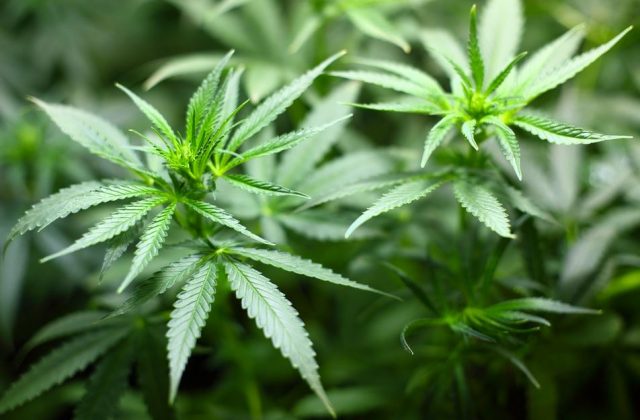“Pain is the most common indication for medical use of cannabis,” says Barth Wilsey, MD, a medicine specialist at the UC Davis Medical Center.
Pain is also the key reason we ask for a prescription. It can be from headaches, a long-term condition like nerve pain or glaucoma, or even a disease like cancer. If medicinal marijuana is legal in your state, and your doctor suggests it would help, you will receive a medical cannabis card. Next, you’ll be put on a list that allows you to purchase cannabis from an authorized seller—a dispensary.
Doctors may prescribe medical marijuana to treat:
- Nausea from chemotherapy
- Muscle spasms from multiple sclerosis
- Seizure disorders
- Weight loss and poor appetite from chronic illness like HIV or nerve pain
- Crohn’s disease
In 2018, the FDA approved THC—the main psychoactive compound in marijuana—to improve appetite and treat nausea, as well as rare, severe forms of epilepsy.
Medical Marijuana — What Are THC and CBD?
Medical marijuana is the medicinal use of cannabis Indica or Cannabis Sativa plant to treat various conditions and diseases.
For example, Death Bubba is a potent Indica-dominant cannabis strain. For those interested in the medicinal use of this particular cannabis strain, there’s no better option for a full relaxation than Death Bubba. Experts recommend it for stress, anxiety, and depression as it comes with sedative properties and mood-stimulating effects. Moreover, it’s an ideal choice for chronic pain spasms and inflammation.
For centuries, the cannabis plant was used medically to treat a variety of diseases around the world. Unfortunately, medicinal marijuana facts are still hard to find as strong opinions exist, both good and bad. Thus, we’ve summarized the medical uses and increasing research on off-label uses in this article.
THC
Tetrahydrocannabinol (THC), as mentioned earlier, is the main psychoactive compound in cannabis. It’s responsible for the “high” you feel when you smoke a joint.
Nabilone and dronabinol—two of the man-made drugs, which also happen to be synthetic forms of THC, are FDA-approved drugs to prevent vomiting and nausea in those receiving chemotherapy.
CBD
Cannabidiol (CBD) is another major compound in cannabis, except it’s not psychoactive.
CBD is known to:
- Relieve pain
- Ease nausea
- Reduce anxiety and depression
- Alleviate cancer-related symptoms
- Reduce acne
- Treat heart health
- Treat loss of appetite
- Treat symptoms of multiple sclerosis, etc.
CBD oil is created by extracting CBD from the cannabis plant. It is then diluted with a carrier oil like hemp seed or coconut oil. To purchase CBD, consider an online dispensary in Canada that boasts a large collection of CBD oil, concentrates, flowers, and edibles the country has to offer with the highest quality.
Medical Marijuana — What Are the Uses of CBD?

Medical uses of cannabis include both approved and studied uses and off-label uses. Medical marijuana is commonly used for pain, depression, anxiety, inflammatory bowel diseases like Crohn’s disease, and muscle spasticity.
More studies and research are being conducted on CBD. Medical CBD, as explained earlier, is anti-inflammatory, antioxidant, anticonvulsant, anxiolytic, neuroprotective, anti-emetic, and antipsychotic. The CBD compound in medicinal cannabis proves to be neuroprotective in fetal hypoxia, Alzheimer’s disease, Huntington’s disease, Parkinson’s disease, and other neurodegenerative conditions, as well as movement disorders.
Many people use modern distillate vaporizers like a flyte pen in conjunction with the highest quality of marijuana concentrates to reduce stress, anxiety, nausea, and insomnia. It comes with all the benefits and healing properties of cannabis without the psychoactive.
Medical Marijuana — How Do You Get It?
To get medicinal marijuana, you must get a written recommendation from a licensed doctor. You must also have a condition that qualifies for medical cannabis use. Each state has a different set of qualifying conditions. As we already explained above, if your state requires you to get a marijuana ID card, you must acquire it so you can purchase cannabis at a dispensary.
Medical Marijuana — Are There Any Side Effects?
Medicinal marijuana side effects aren’t that critical when used at moderate doses and include:
- Fatigue, and
- Dry mouth
At higher doses:
- Paranoia
- Dizziness, and
- Psychoactive effects (e.g., hallucinations, mood changes, etc.)
Because marijuana has few of the same chemicals found in tobacco, it’s been brought to people’s attention that it may harm the lungs. The effects of inhaled cannabis on lung health are not clear, but there’s been evidence indicating the risk for bronchitis and other lung issues.
Marijuana may also affect coordination and judgment, which can lead to injuries and accidents. If used at a really young age when the brain is still developing, it can affect mental function and IQ.
Wrapping Up
When using medical marijuana, you may not know its potency, purity, or side effects. Only those who acquired a cannabis card from a certified doctor should use it. Keep in mind that doctors won’t prescribe cannabis to anyone under 18. We hope you found this article helpful.

A professional writer with over a decade of incessant writing skills. Her topics of interest and expertise range from health, nutrition and psychology.




